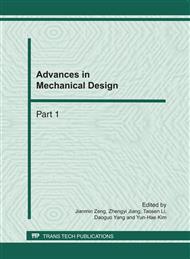p.995
p.999
p.1005
p.1010
p.1014
p.1020
p.1024
p.1031
p.1036
Automotive Interior Noise Analysis and Optimization Subjected to Different Road Excitations
Abstract:
The automotive interior noise subjected to different road excitations was analyzed with finite element simulation method, according to the analysis results of panel acoustic contribution; acoustic property of the vehicle was optimized. Firstly, B and C grade road spectra were generated by MATLAB. Secondly, the frequency response results of body structure subjected to different road excitations were computed by MSC.NASTRAN, and the response results were imported in LMS Virtual. Lab as velocity boundary condition via the coupling between the body structure and cab cavity, and the sound pressure level (SPL) around driver’s ears was predicted by using Acoustic Transfer Vector (ATV) technology. Also, the impact of cavity structure surface impedance on the interior noise was discussed, and the noise characteristics subjected to different road spectra were compared. And the contributions of body panels to the noise levels around the driver’s ears were achieved via panel acoustic contribution analysis (PACA). Finally, taking the vibration velocity of panels as the main goal, the body structure was optimized to reduce the automotive interior noise.
Info:
Periodical:
Pages:
1014-1019
Citation:
Online since:
February 2011
Authors:
Price:
Сopyright:
© 2011 Trans Tech Publications Ltd. All Rights Reserved
Share:
Citation:


